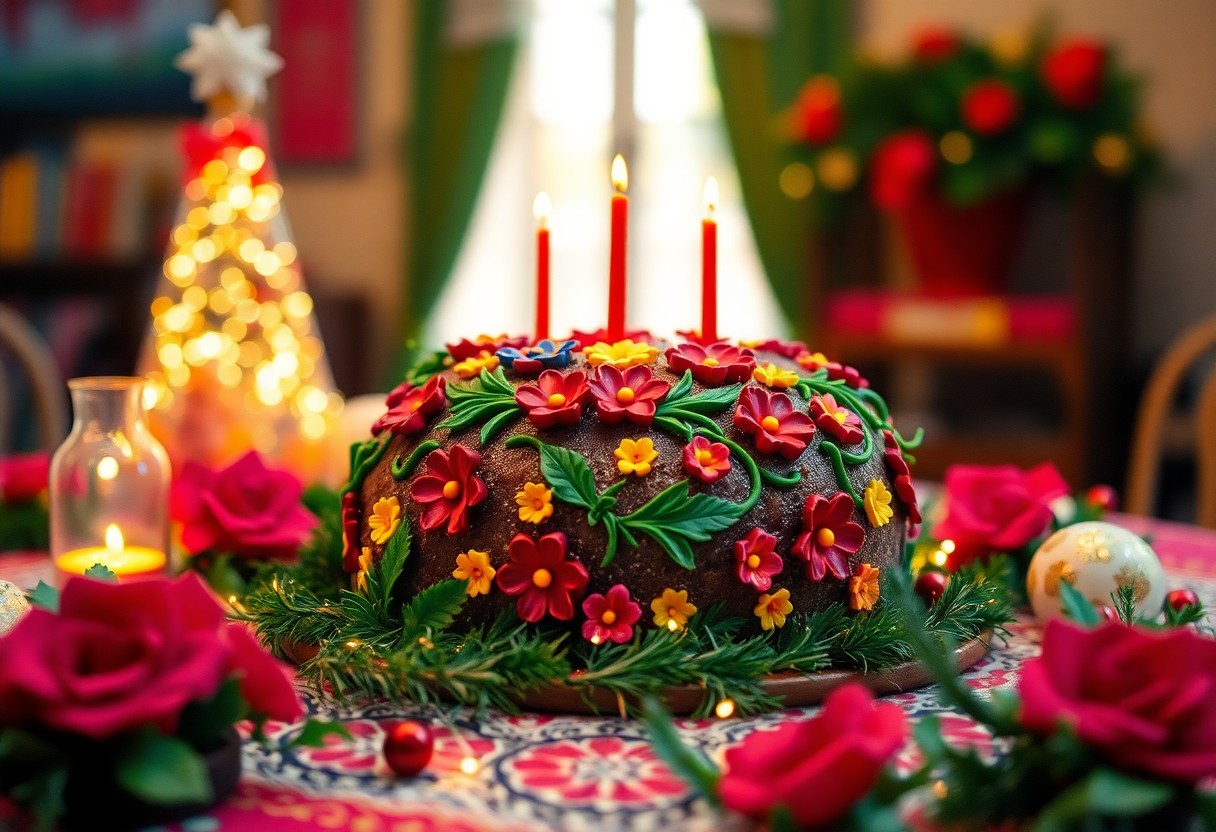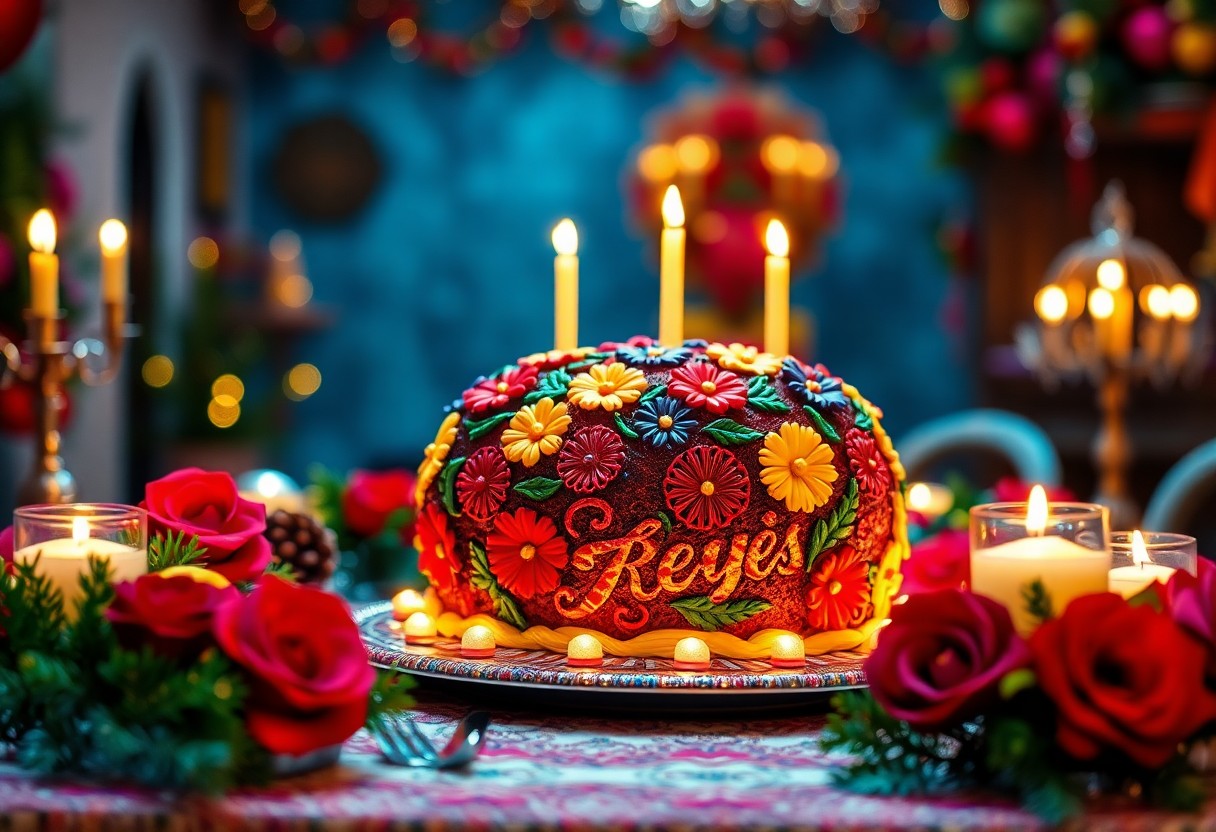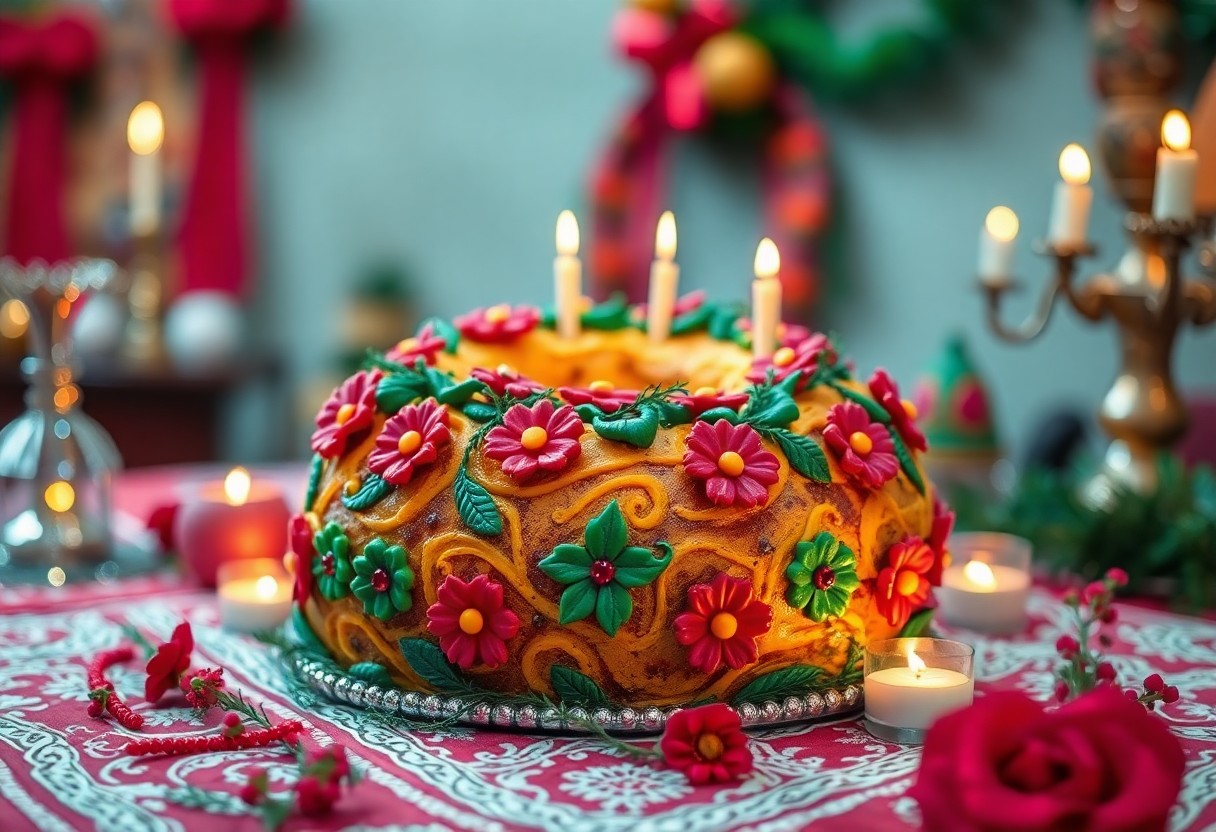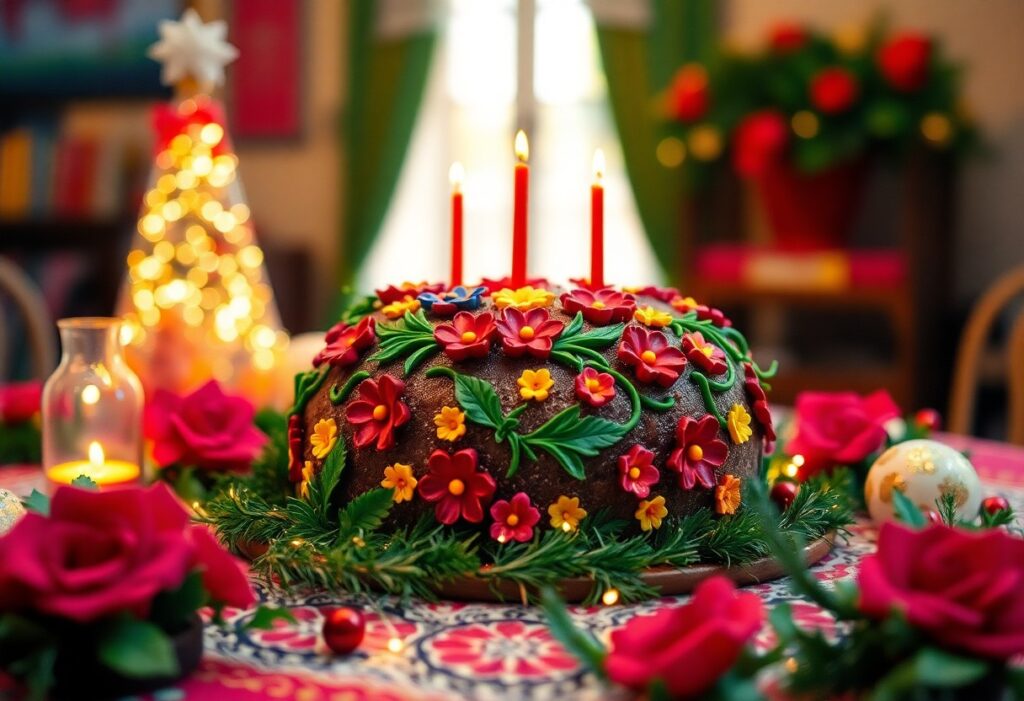Immerse yourself in the vibrant cultural tapestry of San Miguel de Allende, where the enchanting celebration of Rosca de Reyes unites locals and visitors in a delightful and time-honored tradition. Every year, on January 6th, this cherished sweet bread takes center stage, marking the Feast of the Epiphany. The round shape of the Rosca symbolizes eternity, while the hidden baby Jesus figurine adds an element of surprise and excitement to the festivities. Those lucky enough to find the figurine are bestowed with the joyful responsibility of hosting a festive tamales feast on February 2nd, known as Día de la Candelaria. Renowned establishments such as Kaffi and Panio are celebrated for their exquisite Roscas, making it an essential culinary adventure during your visit.

Explore the Fascinating Heritage and Origins of Rosca de Reyes
The Rosca de Reyes has served as a beloved symbol of celebration for centuries, deeply embedded in cultural history. Its roots can be traced back to Europe, specifically Spain and France, where it made its debut during the Middle Ages. As Spanish colonizers brought this tradition to Mexico, it seamlessly merged with local customs, evolving into a vital part of Mexican culture. The cake’s circular shape represents the everlasting love of God, while the hidden baby Jesus figurine within symbolizes the Holy Family’s escape from King Herod. In San Miguel de Allende, this tradition continues to thrive, fostering a sense of community through shared history and delightful flavors.
Delve into the Rich Symbolism Behind Rosca de Reyes
Beyond its delightful taste, the Rosca de Reyes embodies profound symbolism. Its circular design represents the eternal love of God and the crown of the Three Wise Men. Each element, from the colorful candied fruits to the concealed baby figure, tells a story steeped in faith, tradition, and community spirit. Sharing a Rosca with loved ones in San Miguel de Allende connects you to a cherished celebration that beautifully intertwines European and Mexican heritage, enriching your understanding of this festive occasion.
Discover the Meaning Behind the Shape of the Rosca
Every detail of the Rosca is imbued with significance. Its round form is not just visually appealing; it symbolizes eternity and the unity of family and friends. The crown-like design pays tribute to the Three Wise Men, while the act of sharing the bread embodies the spirit of togetherness. In San Miguel de Allende, this tradition serves as a beautiful reminder of the region's rich cultural heritage and the importance of community bonds, reinforcing connections among those who partake in this festive ritual.
The Importance of Candied Fruits in Rosca de Reyes
Adorned with a vibrant array of colorful candied fruits, the Rosca de Reyes is not merely a delight for the palate but also a feast for the eyes. These eye-catching toppings symbolize the jewels adorning a king's crown, contributing both sweetness and texture to the cake. Beyond their decorative purpose, the fruits represent the wealth and gifts brought by the Three Wise Men, enhancing the cake's significance. In San Miguel de Allende, many bakeries source these fruits locally, infusing a sense of regional pride and authenticity into this cherished tradition.
The candied fruits serve not only as a delightful addition but also pay homage to the opulence of the Wise Men’s offerings. Their bright colors evoke the joy and festivity of the Epiphany celebration. When you indulge in a Rosca in San Miguel de Allende, you’re not just savoring a delicious treat, but also experiencing a piece of rich history and artistry that has been passed down through generations.
Uncovering the Tradition of the Hidden Baby Figurine
Central to the Rosca experience is the hidden baby Jesus figurine, a charming and significant element of the tradition. Finding the figurine in your slice is both an exciting surprise and a meaningful commitment, as it signifies that you will host a tamales feast on Día de la Candelaria (February 2nd). This custom adds a playful element of anticipation to the celebration, engaging participants in a shared experience that fosters connections.
This tradition is steeped in rich symbolism. The concealed baby represents the Holy Family's need to protect Jesus from King Herod. In San Miguel de Allende, this custom nurtures community spirit, encouraging families and friends to gather, share the Rosca, and celebrate together. Be cautious when slicing the bread, as the figurine is small and may pose a choking hazard if not handled carefully.
Engage with Fun Facts About the Rosca de Reyes Tradition
The Rosca de Reyes tradition is a rich tapestry of history and symbolism that transcends mere culinary delight. This King’s Cake is a cultural experience that captivates both locals and visitors. In San Miguel de Allende, bakeries create giant roscas that can serve entire communities, transforming this celebration into a shared event. The hidden baby figurine injects an element of excitement, as finding it means you’ll host the tamales feast on Día de la Candelaria. Some modern adaptations even feature multiple figurines, adding a fun and interactive twist for everyone involved.
Marvel at the Giant Roscas in San Miguel de Allende
One of the most awe-inspiring sights during the Rosca de Reyes festivities in San Miguel de Allende is the creation of giant roscas. These monumental cakes can serve hundreds of people and often become the centerpiece of community gatherings. Local bakeries take immense pride in crafting these oversized versions, ensuring that everyone can partake in this beloved tradition. Sharing a slice from such a grand rosca not only creates lasting memories but also strengthens community bonds, bringing people together in celebration.
Dive into Global Variations of the King’s Cake Tradition
Across the globe, cake traditions similar to Rosca de Reyes can be found, each reflecting unique local flavors and customs. For example, in France, the Galette des Rois is a puff pastry filled with almond cream, while in Spain, the Roscón de Reyes often comes adorned with whipped cream. Each version celebrates the Epiphany, showcasing a common theme while incorporating distinctive regional elements. These international variations illustrate the widespread appeal and adaptability of this festive tradition.
A closer examination of these variations reveals fascinating distinctions. For instance, the French Galette des Rois utilizes a fève, a small porcelain figurine, instead of a baby Jesus, while in Portugal, the Bolo Rei incorporates dried fruits and nuts, providing a different texture and flavor. Such adaptations highlight how the tradition can evolve while retaining its core significance across diverse cultures, making it a vibrant part of global culinary heritage.
Embracing Modern Innovations in the Rosca Tradition
Contemporary bakers are breathing new life into the Rosca de Reyes, introducing creative twists that appeal to modern tastes. You might discover versions filled with chocolate, cream cheese, or dulce de leche, adding exciting new layers of flavor to the classic recipe. Some bakeries even offer gluten-free or vegan options, ensuring that everyone can enjoy this beloved tradition. These innovations help keep the Rosca de Reyes relevant while honoring its historical roots and cultural significance.
Such variations are vital for keeping the Rosca de Reyes tradition alive in today’s dynamic culinary landscape. By blending age-old customs with contemporary preferences, bakers in San Miguel de Allende and beyond are preserving the spirit of the celebration while making it accessible to all. Whether you opt for the traditional version or a modern reinterpretation, the Rosca de Reyes continues to spread joy and foster connections across generations.

Find Your Perfect Rosca de Reyes in San Miguel de Allende
Your search for the ultimate Rosca de Reyes in San Miguel de Allende is set to begin. The city is home to a variety of bakeries and cafés dedicated to crafting this traditional treat with passion and authenticity. From charming family-run panaderías to trendy modern cafés, there’s an enticing selection available, each offering a unique interpretation of the classic recipe that reflects the local culture.
Discover the Best Bakeries and Cafés for Authentic Rosca de Reyes
If you’re on the lookout for the finest places to savor Rosca de Reyes, start with Kaffi, renowned for its artisanal approach, or Café Umarán, where tradition meets contemporary flavors. Local favorites like Panio and La Colmena offer freshly baked roscas characterized by rich, buttery textures. For an even broader selection, City Market and Panadería la Buena Vida present both traditional and innovative versions of this festive bread, ensuring you have plenty of options to choose from.
Participate in Community Celebrations and Events for Rosca de Reyes
Beyond the bakeries, San Miguel de Allende comes alive with community events celebrating Rosca de Reyes. On January 6th, you can join public gatherings at the Jardín Principal, where giant roscas are shared among locals and visitors alike. These vibrant events often feature music, dancing, and storytelling, offering you a chance to immerse yourself in this lively tradition.
Taking part in the Rosca de Reyes festivities in San Miguel de Allende is truly unmissable. The central square hosts grand celebrations where you can witness the cutting of massive roscas that feed hundreds. While the hidden baby figurine may lead to unexpected responsibilities, the joy of engaging in these communal festivities is unparalleled, offering you a profound connection to the local culture and traditions.

Celebrate Rosca de Reyes Like a True Local in San Miguel de Allende
The Rosca de Reyes transcends mere dessert; it embodies the cultural spirit of San Miguel de Allende. Start your celebration by gathering friends and family to share the cake on January 6th. As you slice the rosca, be aware that finding the hidden baby Jesus figurine means you’ll be hosting a tamales feast on February 2nd. Pair the cake with traditional hot chocolate or atole to enhance the festive atmosphere, whether in local bakeries or your own home. Embrace the tradition fully by learning its rich symbolism and sharing stories about the Three Wise Men with your loved ones.
Hosting an Unforgettable Tamales Feast
If you happen to find the baby figurine in your slice, you will be responsible for hosting a lively tamales feast on Día de la Candelaria. This is a wonderful opportunity to prepare or order a variety of tamales filled with delicious options such as mole, rajas, or sweet fillings. Invite friends and family to join in the celebration, and remember to serve atole or champurrado alongside the tamales for an authentic experience. This joyous feast not only continues the tradition but also strengthens your connections with the community.
Sharing the Joy of Rosca Tradition with Loved Ones
Transforming Rosca de Reyes into a cherished event is easily achievable by including your loved ones in the celebration. Gather everyone around the table, share the cake, and explain its symbolism while recounting stories of the Three Wise Men. Encourage children to participate, as they often delight in the thrill of searching for the hidden figurine. This tradition fosters connection and keeps the vibrant Mexican culture alive in San Miguel de Allende.
As with many traditions, the joy of Rosca de Reyes is amplified when shared with others. Finding the baby figurine becomes a fun challenge and a significant responsibility, as it means hosting the tamales feast. Sharing the cake with friends and family deepens relationships and creates lasting memories. In San Miguel de Allende, this tradition stands out as a highlight of the holiday season, intertwining delicious food with deep cultural significance. It’s essential to explain the symbolism to younger generations, ensuring that this cherished tradition is passed down for years to come.
Understanding the Cultural Importance of Rosca de Reyes Throughout Mexico
Keep the spirit of tradition alive by acknowledging the cultural significance of Rosca de Reyes in Mexico. Celebrated on January 6th, this delightful sweet bread marks the Feast of the Epiphany, commemorating the visit of the Three Wise Men to the infant Jesus. The circular shape represents eternity, while the hidden baby figurine signifies the Holy Family’s escape from King Herod. Discovering the figurine means you’ll host a tamales feast on February 2nd, known as Día de la Candelaria. In San Miguel de Allende, this tradition unites communities, with bakeries creating giant roscas for collective celebrations, beautifully blending faith, history, and joy into a memorable experience.
Experience the Joyful Tradition of Rosca de Reyes in San Miguel de Allende
Now is the perfect moment to dive into the rich tradition of Rosca de Reyes in San Miguel de Allende, where this festive treat serves as a unifying force for communities. The cake’s profound symbolism and historical significance elevate it beyond a simple dessert; it represents a celebration of culture and faith. Whether you savor it at a local bakery or share it with friends and family, the Rosca de Reyes offers a unique opportunity to connect with Mexican heritage. Plan your visit to San Miguel de Allende during the Epiphany season to fully relish this delightful tradition and create unforgettable memories.
Your Questions Answered: Comprehensive Rosca de Reyes FAQ
What is the cultural significance of Rosca de Reyes in San Miguel de Allende?
The Rosca de Reyes is a beloved traditional Mexican cake enjoyed on January 6th to celebrate the Feast of the Epiphany. In San Miguel de Allende, this tradition holds profound cultural and religious importance. The cake’s round shape signifies eternity, while the hidden baby Jesus figurine symbolizes the Holy Family’s escape from King Herod. Sharing the Rosca with family and friends is a cherished custom deeply rooted in the community, enriching the local culture.
Where can I find the best Rosca de Reyes in San Miguel de Allende?
San Miguel de Allende boasts numerous bakeries and cafés renowned for their delicious Roscas. Notable spots include Kaffi on Carlos del Castillo, Café Umarán in Zona Centro, and Panio on Correo Street. La Colmena and Panadería la Buena Vida also come highly recommended for their authentic and flavorful Roscas, ensuring you find the perfect treat to celebrate this festive occasion.
What should I do if I find the baby Jesus figurine in my slice of Rosca?
Discovering the baby Jesus figurine in your slice of Rosca is considered an honor, but it also carries the responsibility of hosting a tamales feast on February 2nd, known as Día de la Candelaria. This tradition adds a fun, communal aspect to the celebration, bringing people together to continue the festivities and deepen community bonds.
The Article: The Delicious Tradition of Rosca de Reyes in San Miguel de Allende appeared first on https://fallinginlovewithsanmiguel.com/
The Article Rosca de Reyes: A Tasty Tradition in San Miguel de Allende Was Found On https://limitsofstrategy.com



Your description of the Rosca de Reyes celebration in San Miguel de Allende beautifully captures the essence of this culturally rich tradition. I can almost envision the vibrant colors, warm aromas, and the palpable excitement in the air as families and friends gather to partake in this joyful ritual. The round shape of the Rosca, symbolizing eternity, resonates deeply with the idea of community and continuity, emphasizing our shared stories and experiences through generations. It’s fascinating to think about how this European tradition has woven itself into the fabric of Mexican culture, creating a unique blend of history, faith, and festivity.